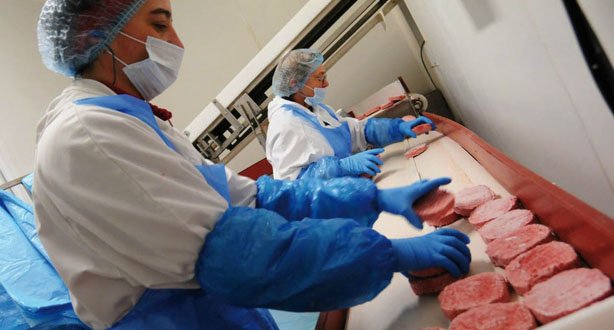An article entitled “Hygienic Design: Best Practices for Food and Beverage Facilities” by Joseph Bove talks about how to best keep your food processing facility sanitary and up to the new FSMA standards. He lists best practices such as integrating sanitation into facility design, controlling water accumulation inside the facility, designing utility systems to prevent contamination, establishing distinct hygienic zones within the facility and controlling room temperature and humidity among others. He then goes further and says that all best practices fall within three major buckets: ability to maintain and clean the processing facility, temperature and moisture control, and zones of control. SLIPNOT anti slip metal flooring products are used within hundreds of food/beverage processing facilities including General Mills, Tyson Foods and Hormel Foods among many others, and can help prevent slip and fall accidents while maintaining safe and sanitary conditions within these three “major buckets”.
Ability to maintain and clean the facility: Non slip stainless steel products from SLIPNOT are available in both 304 and 316 stainless steel with 316 being most popular in food/beverage plants because of its bacterial resistance and tough cleaning capabilities. The metal flooring has been used to add traction to stair treads, ladder rungs, crossovers and platforms among many other applications and can be cleaned with most standard agents. A stiff bristled brush and a power washer is recommended in order to keep the surface free of grease build up and debris and to keep the high traction surface at its best.
Temperature and moisture control: Using SLIPNOT products in areas that require a high amount of moisture and drainage can help keep workers safe and the area clean. Slip resistant drain covers and grating help by creating a safe stepping place as well as an area for excess moisture to drain away. Moisture in the air is no match for the slip resistant qualities of stainless steel plates with the non slip surface on it. The surface that SLIPNOT applies is 100% grit free so there is no threat of it breaking off and contaminating the end product.
Zones of Control: SLIPNOT flooring is available in steel, aluminum and stainless steel. Using different materials to maintain separate zones for raw food processing, ready to eat food processing, employee breaks, packaging and shipping is very important in order to prevent cross contamination and to maintain a high level of sanitation. While stainless steel is generally used within the processing area itself some food/beverage processing companies have utilized other metals such as non slip galvanized steel in areas such as the label room and aluminum platforms for public walking spaces.
The article ends by stating that food safety is a shared responsibility between designers, engineers, construction companies, management and employees. An effective sanitary management control procedure should be written and maintained by all parties. Remember to include safety in these sanitary plans.
Bove, Joseph. “Hygienic Design: Best Practices for Food and Beverage Facilities.” www.refridgeratedfrozenfood.com. Sept 8, 2015. Sept 22, 2015




